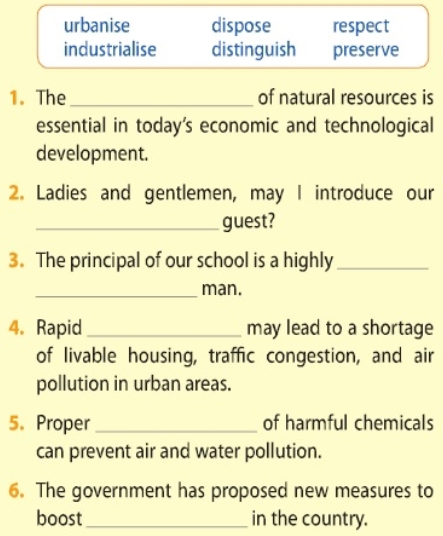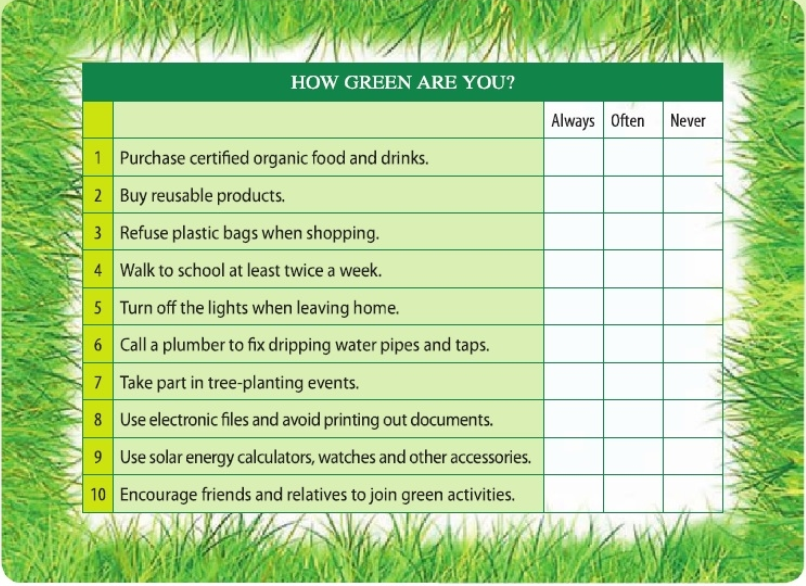Questions
Câu 137: Verified Answer
2. (Trang 10 - Tiếng Anh 12): Work in groups. Use the note cards to present your talk to your group members.
Bài làm:
Câu 132: Verified Answer
5. (Trang 6 - Tiếng anh 12): Underline ten mistakes in the conversation and correct them. (Gạch chân 10 lỗi sai trong cuộc đối thoại sau và sửa chúng.)

Bài làm:
Câu 127: Verified Answer
2. (Trang 5 - Tiếng anh 12): Practice the sentences in 1.
Bài làm:
Câu 125: Verified Answer
6. (Trang 44 - Tiếng anh 12): Use the ideas in 5 (and your own ideas) to an essay of 180-250 words about the pros cons of solar energy.
(Sử dụng các ý tưởng trong 5 (và những ý tưởng riêng của mình) để viết một bài luận khoảng 180-250 từ về những ưu khuyết điểm của năng lượng mặt trời.)
Bài làm:
Câu 124: Verified Answer
5. (Trang 44 - Tiếng anh 12): Write meaningful sentences about the pros and cons of solar energy. Use the words given
(Viết câu có ý nghĩa về những ưu và khuyết điểm của năng lượng mặt trời. Sử dụng các từ cho trước)
Bài làm:
Câu 122: Verified Answer
3. (Trang 44 - Tiếng anh 12): Work with a partner. Use the information in the table below or your own ideas to make a conversation about one of the historical figures.
(Làm việc cùng người bạn. Sử dụng các thông tin trong bảng dưới đây hoặc ý tưởng của riêng bạn để tạo một cuộc trò chuyện về một trong những nhân vật lịch sử.)

Bài làm:
Câu 121: Verified Answer
2. (Trang 44 - Tiếng anh 12): Read the text again and decide whether the following statements are true (T), false (F), or not given (NG), and tick the correct box.
(Đọc văn bản một lần nữa và quyết định việc các nhận định sau đây là đúng (T), sai (F), hoặc không xác định (NG), và đánh dấu vào ô đúng.)
Bài làm:
Câu 117: Verified Answer
4. (Trang 42 - Tiếng anh 12): Complete the sentences, using the correct form of the verbs in the box.
(Hoàn thành các câu, sử dụng hình thức đúng của động từ trong khung.)

Bài làm:
Câu 114: Verified Answer
1. (Trang 42 - Tiếng anh 12): Use the correct form of the words in the box to complete the sentences.
(Sử dụng các hình thức đúng của các từ trong khung để hoàn thành câu.)

Bài làm:
Câu 113: Verified Answer
2. (Trang 41 - Tiếng anh 12): Report your findings to your class.
(Báo cáo kết quả với lớp của bạn.)
Bài làm:
Câu 112: Verified Answer
1. (Trang 41 - Tiếng anh 12): Do a survey. Find out:
(Làm một cuộc khảo sát. Tìm ra:)
· How many students in your class have chosen a green lifestyle
· What they often do
· Why they think their activities are environmentally friendly

Bài làm:
Câu 111: Verified Answer
3. (Trang 40 - Tiếng anh 12): Match the simple sentences. Then write complex sentences with which
(Nối các câu đơn. Sau đó viết những câu phức với which.)

Bài làm:
Câu 108: Verified Answer
Complete the sentences with the correct form of the words/phrases in the box.
(Hoàn thành câu với hình thức đúng của các từ / cụm từ trong khung.)

Bài làm:
Câu 105: Verified Answer
2. (Trang 38 - Tiếng anh 12): Work in pairs. Discuss the question.
(Làm việc theo cặp. Thảo luận về câu hỏi.)
What should people in big cities in Viet Nam do to make their city become a green city like Stockholm?
(Mọi người ở các thành phố lớn ở Việt Nam nên làm gì để làm cho thành phố của họ trở thành một thành phố xanh như Stockholm?)
Bài làm:
Câu 103: Verified Answer
2. (Trang 38 - Tiếng anh 12): Work in groups. Discuss the following question.
(Làm việc nhóm. Thảo luận về câu hỏi sau đây.)
How can you contribute to the green movement in Viet Nam?
(Làm thế nào bạn có thể đóng góp cho phong trào xanh tại Việt Nam?)
Bài làm:
Câu 102: Verified Answer
1. (Trang 38 - Tiếng anh 12): Listen to an overview of the green movement in Viet Nam. Decide whether the following statements are true (T), or false (F). Tick the correct box.
(Nghe một cái nhìn tổng quan của phong trào xanh ở Việt Nam. Quyết định xem các nhận định sau đây là đúng (T) hoặc sai (F). Đánh dấu vào ô thích hợp.)


